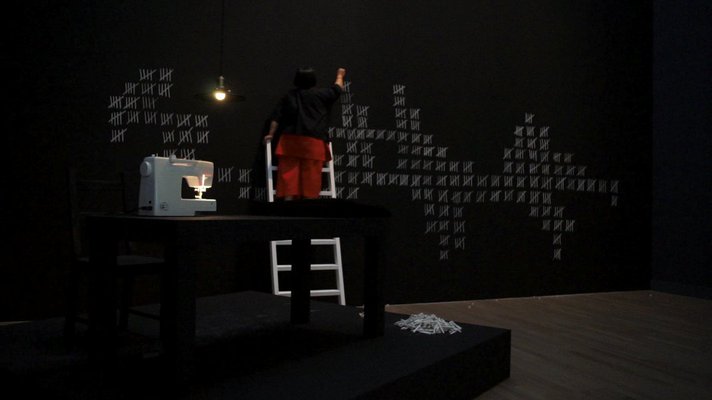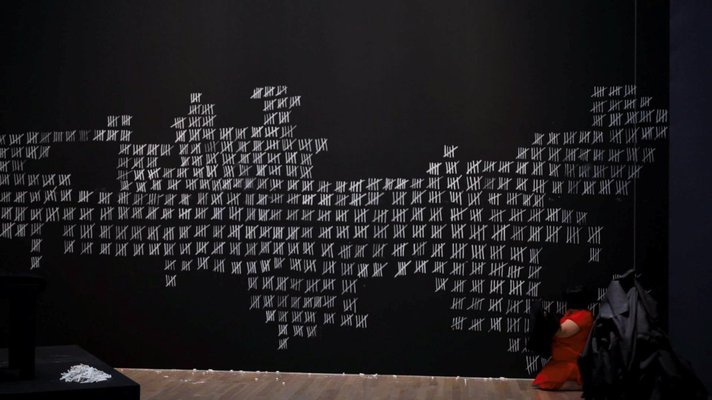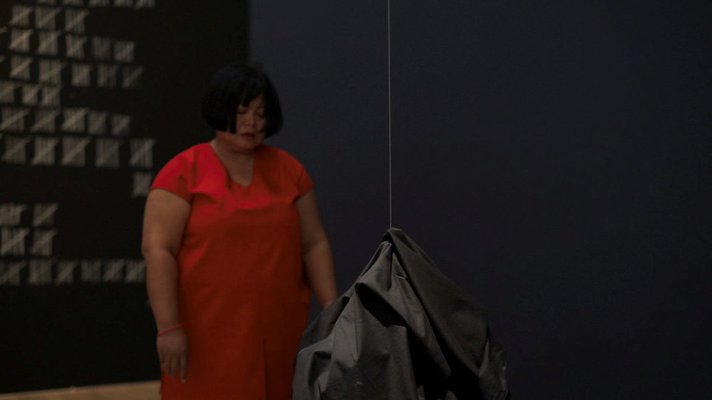




-
Details
- Place where the work was made
-
Java
→
Indonesia
- Date
- 2015
- Media category
- Time-based art
- Materials used
- single channel digtial video
- Dimensions
- duration: 00:28:56 min
- Signature & date
Not signed. Not dated.
Signed Certificate of Authenticity bot c., black ink "Melati Surodarmo". Dated bot c., printed black ink "...5th of May 2019".- Credit
- Donated through the Australian Governments Cultural Gifts Program by Tiffany Wood-Arndt 2022
- Location
- Not on display
- Accession number
- 15.2022
- Copyright
- © Melati Suryodarmo
- Artist information
-
Melati Suryodarmo
Works in the collection
- Share
-
-
About
Melati Suryodarmo graduated from the Hochschule für Bildende Künste Braunscheweig, Germany under the tutelage of Marina Abramović and Anzu Furukawa with a Meisterschüler qualification in Performance Art. Over the last two decades she has established herself as an internationally acclaimed artist, represented in major international biennales and institutional collections, including Sunshower: Contemporary Art from Southeast Asia 1980s to Now (2017), National Art Centre Tokyo & Mori Art Museum; 8th Asia Pacific Triennale (2015), Queensland Art Gallery & Gallery of Modern Art, Queensland, Australia; 5th Guangzhou Triennale (2015), Guangzhou, China.
Amnesia, presented as a live performance and captured on video brings together elements from Suryodarmo’s practice informed by Butoh, dance and Javanese song and mysticism that explore the body and its relationship to memory. During the five-hour performance, Suryodarmo enters a room and takes up activities such as sewing, counting and mark making. In particular, Amnesia explores the clothing and body postures of the many women she saw while growing up in Solo, one of the Central Javanese court cities. As a child Suryodarmo was immersed in an environment where women moved according to certain cultural norms and were still to be seen wearing tradi¬tional Javanese clothing of batik cloth and kebaya tunics. After three decades, Suryodarmo observed that the body’s gestures and movements of these women had almost disappeared.
Amnesia stands as a testament to the daily movements of the past and a desire to understand how, although now largely invisible, these gestures are still present in the body politic of women. Suryodarmo says of the work, ‘We… cannot avoid the fact that our bodies are attached and carrying historical baggage of our origin, people, country, and our families.’
-
Places
Where the work was made
Java